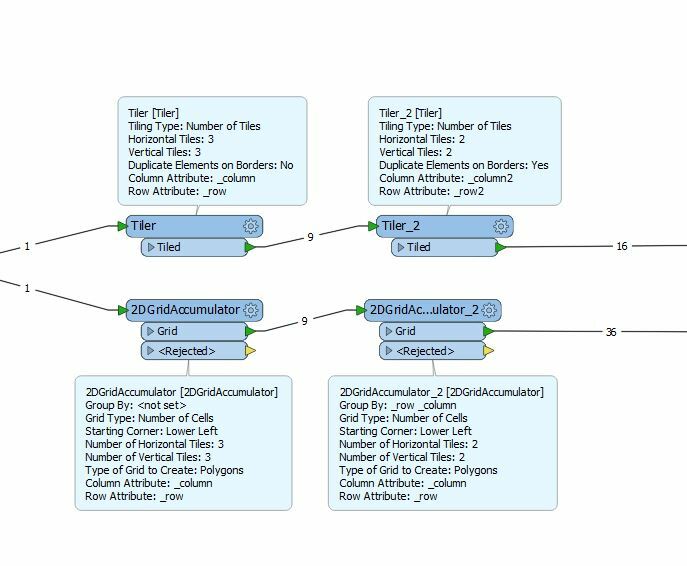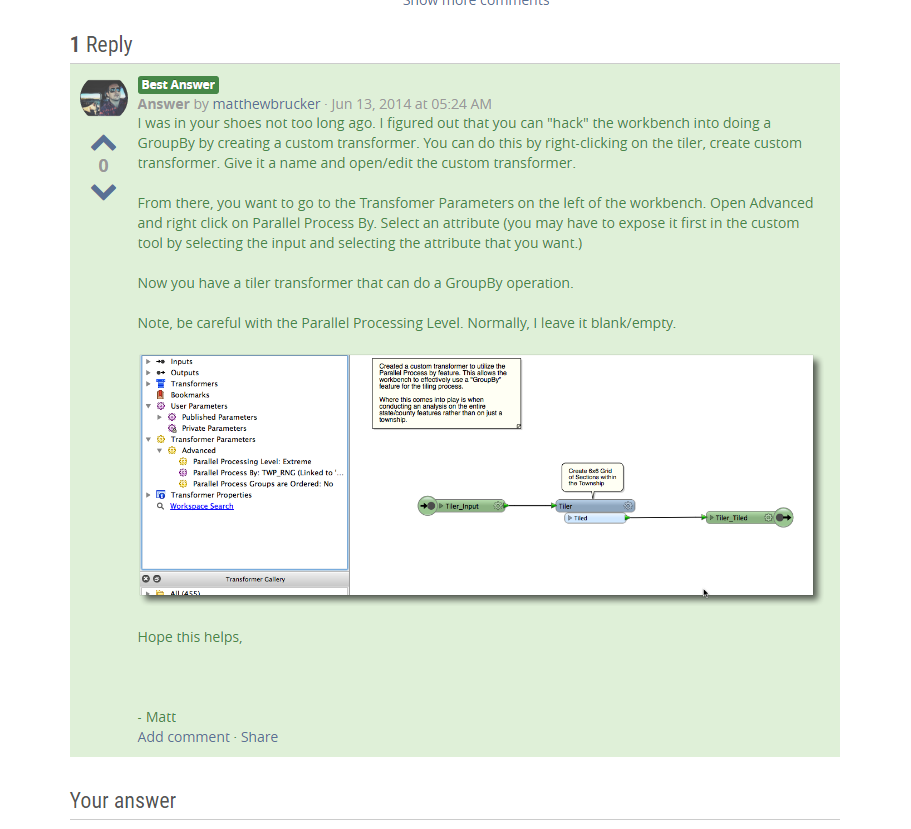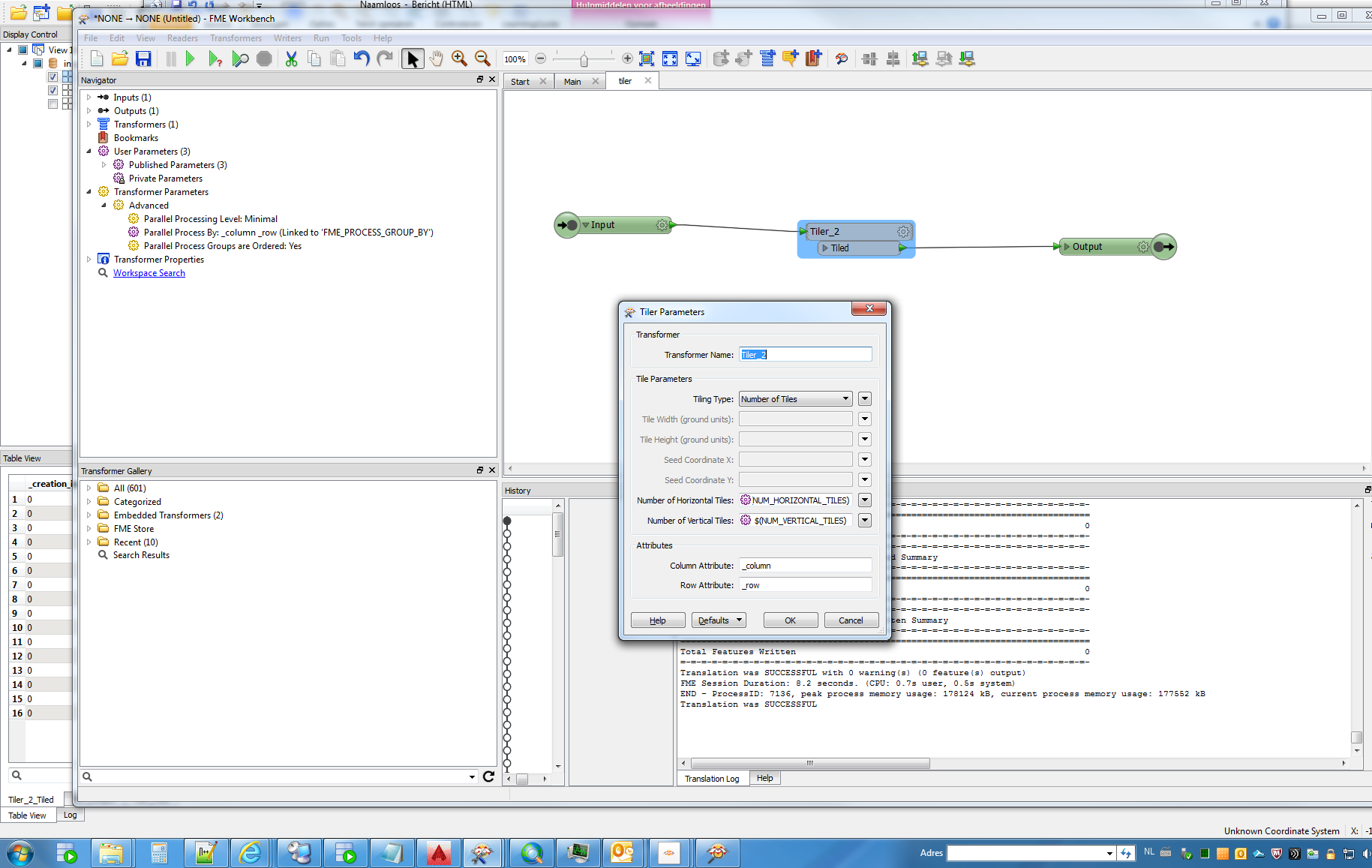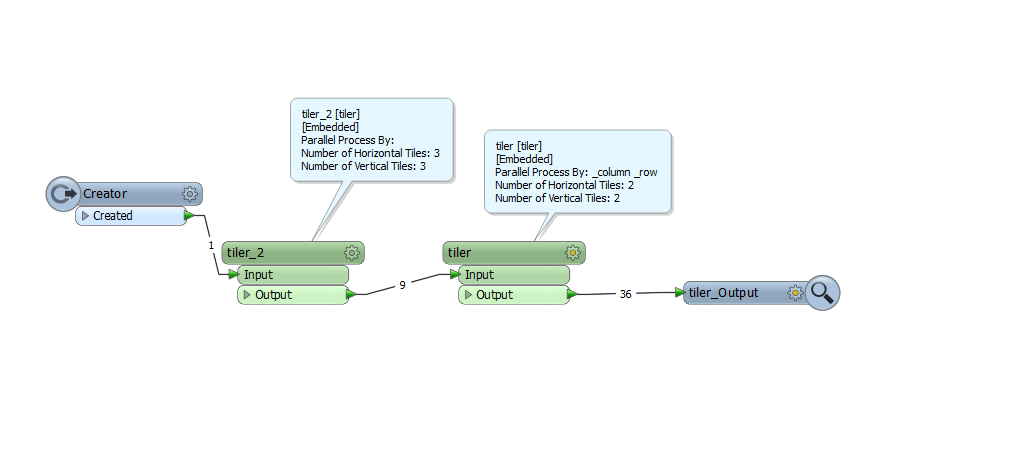Hi group,
I've run into a curious problem with the Tiler transformer.
I'm trying to sub-divide tiles, but when I sub-divide a previously sub-divided tile, it doesn't divide up the way it's supposed to.
My simple example divided an initial box into 3x3, and then I attempt to sub-divide each of these 9 features into 2x2. I expected 36 tiles, but I end up with 16 boxes !?!
What gives??
Cheers
Lars I.



















 Another option
Another option


